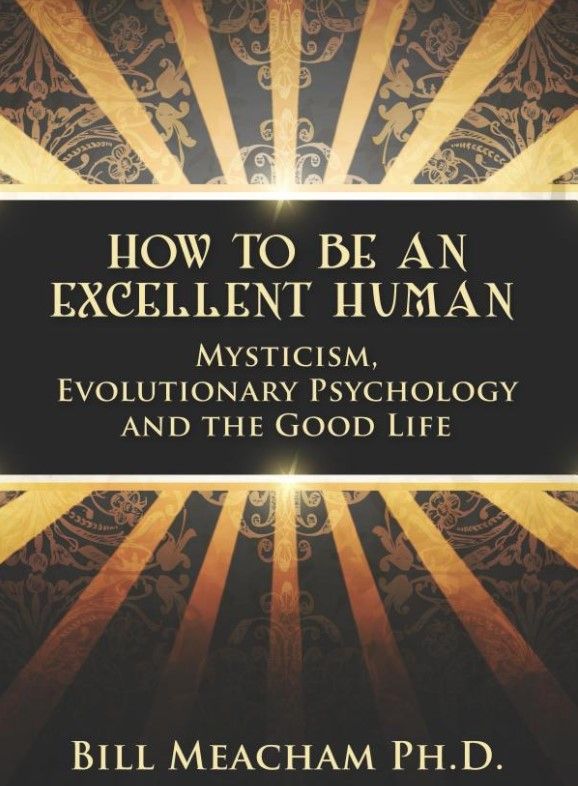Dead or Alive?
Is the world fundamentally dead or alive? That is the key question of metaphysics, how we conceptualize reality as a whole in its broadest categories. Its answer determines how we approach ourselves and our world.
That the world is dead is the premise of a worldview prevalent ever since Democritus declared that it is made of atoms, which are physically indivisible, separated in space and always in motion. In the 18th century, with the rise of modern science, Sir Isaac Newton again asserted that reality consists of solid, impenetrable particles, and ever since then we have thought ourselves to live in a world that is, when all is said and done, physical and causally determined, a Newtonian mechanistic universe in which inert matter is all there is and every change is determined, much like the movement of billiard balls. On this view, life somehow mysteriously emerges from dead matter when that matter is arranged in certain complex configurations, and conscious experience somehow emerges from living complexes. At the root, however, it’s all just stuff moving around. The success of the technological accomplishments we have enjoyed since then lends credence to such a view. But such a cold universe leaves no room for human freedom and creativity.
That the world is alive is the premise of a worldview with equally ancient philosophical credentials. In this view, reality is best understood as processes rather than things. The essential character of all that exists is change, and enduring objects are persisting patterns amid change, much like the flame of a candle. This view too has been present in European thought from the time of the Greeks. Heraclitus used the metaphor of a river, which remains what it is by changing what it contains. Change is a necessary condition for constancy; without it we would have only lifeless uniformity and would not even know it, because knowing itself is a temporal process.
The most elaborate and thoroughly-developed version of this theory is that of Alfred North Whitehead, a philosopher of the early 20th century, who postulated that reality is made up of atomic or momentary events, not inert particles, and that each event has two aspects, mental and physical. In a primordial way each event experiences its surroundings and is experienced by other events.(1) This doctrine is known as panpsychism, the view that everything, from the smallest quantum event to the most complex living being, has an aspect of mentality as well as physicality.
This theory does not assert that rocks have psyches in the same way that humans do. That would be ridiculous, as rocks exhibit none of the complex behavior of humans. But if we take a broader view of mentality, that mentality consists of sensory and emotional experience, then the theory becomes more plausible. Whitehead says that the fundamental building blocks of reality are events that have two aspects, interiority and exteriority. By interiority I mean that events take into account their surroundings in a manner analogous to human experience, albeit in a much more primitive fashion. By exteriority I mean that each event is present for the proto-experience of other events. Sequences of events form what we know as quantum objects, which behave both as waves and particles. From there we can in theory construct the variegated world of things and living beings that we know in our everyday experience. Perhaps a better, although clumsier, term would be pan-proto-experientialism.
The point is, rather than assuming that consciousness mysteriously emerges when brute matter becomes organized in sufficient complexity, we can assume that a primitive form of experience is present at every level of reality. Then we need make no unverifiable suppositions about which animals are conscious and which are not, nor do we have to puzzle over how mere complexity of matter gives rise to consciousness. Reality is a continuum, all aspects of which have some degree of mentality as well as physicality.
This metaphysical view solves the mind-body problem by asserting that everything has at least the rudiments of mind. Everything, even non-living things and even at the tiniest, most elementary level, has some sort of primordial experience. I like to say that everything has an inside and an outside, the inside being the world as experienced by the entity and the outside being the way that the entity is experienced by other entities.
This is a metaphysical theory, neither verifiable nor falsifiable by scientific experiment. But it is not thereby meaningless. It ties together quite coherently everything we know about the world from our own personal experience and from objective scientific knowledge.
And it makes a difference. It determines whether we feel we feel as if we are strangers in a dead universe or at home in a world of life. It determines where we look for wisdom and inspiration. And it determines how we treat ourselves and our environment.
If we think of ourselves as an anomaly, as a mere byproduct of mindless matter, then we have to find a way to cope. We might lose ourselves in religious faith, huddling fearfully against the fall of night, praying for something to save us. Or we might rebel, heroically but foolishly, against the absurdity of it all in order to stave off anomie and despair. Or we might just party harder. In any case, we treat the world as a thing, extracting its resources unsustainably and risking collapse, attempting to dominate it because we feel apart from it. But we’re not, so it will bite back.
If we think of ourselves as living in a world full of life, we feel connected and nurtured. We live in confidence, not fear, recognizing ourselves as an integral part of a larger whole. We pay attention to ecosystems and natural processes and adapt our technology to work as nature does, increasing abundance for all. We cooperate with our living environment and each other to increase the welfare of all.
I am exaggerating these two extremes, of course, to make the point starkly. No doubt many materialists are compassionate and wise, and many who believe that the world is alive fall prey to pettiness and fear. And I am not suggesting that we should adopt a biocentric view just because it feels better. I am suggesting that panpsychism makes the most sense as a metaphysical system, a conceptual scheme that encompasses everything, and that thinking in those terms will lead us to adopt better strategies for being in the world, strategies that will help us all survive and thrive and be joyful.
———
Notes
(1) This is not an intuitive idea, and Whitehead’s major work, Process and Reality, is dense and highly-technical, over 500 pages long. I’ll try to summarize it briefly.
These events, which Whitehead calls “actual occasions” are a bit like subatomic particles, with some important differences:
- Each is momentary, coming into being, going through various phases and then passing away.
- The final phase of an actual occasion is not fully determined by the beginning. There is room for novelty, for the possibility of something new coming into being.
- Each actual occasion has awareness. In a primordial way it experiences its past and its present surroundings. Whitehead calls it an “occasion of experience.”
- What we think of as a particle is actually a series of these actual occasions. A single electron is a series of momentary electron-occasions that form an enduring object much like the momentary frames of a movie form a continuous picture.
- Nonliving things are composed of streams of actual occasions whose primordial experiences randomly cancel each other out.
- The primordial experiences of the actual occasions comprising living things, such as plants, animals and human beings, bind together and reinforce each other, giving birth to a higher-level experience. The richest and most intricate example we know of is our own consciousness.
References
Whitehead, Alfred North. Process and Reality: An Essay in Cosmology. New York: Harper and Row Harper Torchbook, 1960.

How To Be An Excellent Human
Mysticism, Evolutionary Psychology and the Good Life by Bill Beacham, Ph.D.

